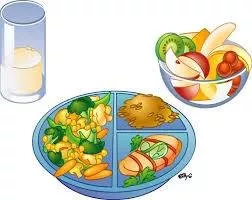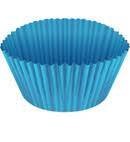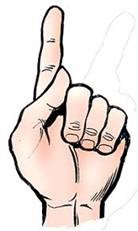View Other Topics.
 Jun 3, 2019
Jun 3, 2019
Healthy serving sizes – clipartpanda.com
(all images from clipartpanda.com)
Americans are having more weight related problems than ever before. Eating a variety of foods from each food group will help you get the nutrients you need according to nih.gov.
The Dietary Guidelines suggests that people choose foods every day from the following:
Fruits—1½ to 2½ cups
Vegetables—2 to 3½ cups
Grains—5 to 10 ounces
Protein foods—5 to 7 ounces
Dairy foods—3 cups of fat-free or low-fat milk
Oils—5 to 8 teaspoons
Solid fats and added sugars (SoFAS) and sodium (salt)—keep the amount of SoFAS and sodium small
Does this mean you have to measure or weigh everything you eat? Not really. Some people find it helps to measure things carefully at first, but once you get used to your new eating plan, strict measuring probably won’t be necessary. But, what exactly is a serving? And is that different from a portion?
The word "serving" can have different meanings depending on how it is used. A Dietary Approaches to Stop Hypertension Plan serving is how much of each food you should eat to meet the plan’s daily recommendation. (Learn more about serving sizes on the Nutrition Facts label .)
The term "portion" means how much of a single food is actually on your dish—a portion size can vary from meal to meal. For example, one restaurant might serve larger portions than another.
Here are some pictures to help you understand about how much you are eating.

Baseball
One cup cooked vegetables, salad, baked potato = baseball

four dice
1 to 1½ ounces cheese = four dice

Hand
Three ounces of meat or poultry = palm of hand
Here are some more pictures to help you understand how much you are eating:

cupcake liner
Half cup fruit, beans, rice, noodles, or ice cream = cupcake wrapper, half of a baseball

index finger
One teaspoon margarine or oil = tip of first finger

compact disc
One pancake or tortilla = compact disc
TIP: SNACKING
Snacks are okay, as long as they are smart food choices. If you want an afternoon pick-me-up or after-dinner snack, have a piece of fruit, or spread peanut butter or low-fat cream cheese on whole wheat toast. Don’t forget to include snacks in your daily food count. For example, one tablespoon of peanut butter spread on a slice of whole wheat toast counts toward the grains group and the protein foods group. Some ideas for healthy snacking include:
Have an ounce of cheese with some whole-grain crackers, a container of low-fat or fat-free yogurt, or some low-fat popcorn.
Put fruit instead of candy in the bowl on your coffee table.
Keep a container of cleaned, raw vegetables in the fridge.
If you want some chips or nuts, don’t eat from the bag. Count out a serving, and put the bag away.
Tags:
#food,#snacks,#starzpsychics.com,#stsrz#advisors
Serving and Portion Sizes: How Much Should I Eat?.

Healthy serving sizes – clipartpanda.com
(all images from clipartpanda.com)
Americans are having more weight related problems than ever before. Eating a variety of foods from each food group will help you get the nutrients you need according to nih.gov.
The Dietary Guidelines suggests that people choose foods every day from the following:
Fruits—1½ to 2½ cups
Vegetables—2 to 3½ cups
Grains—5 to 10 ounces
Protein foods—5 to 7 ounces
Dairy foods—3 cups of fat-free or low-fat milk
Oils—5 to 8 teaspoons
Solid fats and added sugars (SoFAS) and sodium (salt)—keep the amount of SoFAS and sodium small
Does this mean you have to measure or weigh everything you eat? Not really. Some people find it helps to measure things carefully at first, but once you get used to your new eating plan, strict measuring probably won’t be necessary. But, what exactly is a serving? And is that different from a portion?
The word "serving" can have different meanings depending on how it is used. A Dietary Approaches to Stop Hypertension Plan serving is how much of each food you should eat to meet the plan’s daily recommendation. (Learn more about serving sizes on the Nutrition Facts label .)
The term "portion" means how much of a single food is actually on your dish—a portion size can vary from meal to meal. For example, one restaurant might serve larger portions than another.
Here are some pictures to help you understand about how much you are eating.

Baseball
One cup cooked vegetables, salad, baked potato = baseball

four dice
1 to 1½ ounces cheese = four dice

Hand
Three ounces of meat or poultry = palm of hand
Here are some more pictures to help you understand how much you are eating:

cupcake liner
Half cup fruit, beans, rice, noodles, or ice cream = cupcake wrapper, half of a baseball

index finger
One teaspoon margarine or oil = tip of first finger

compact disc
One pancake or tortilla = compact disc
TIP: SNACKING
Snacks are okay, as long as they are smart food choices. If you want an afternoon pick-me-up or after-dinner snack, have a piece of fruit, or spread peanut butter or low-fat cream cheese on whole wheat toast. Don’t forget to include snacks in your daily food count. For example, one tablespoon of peanut butter spread on a slice of whole wheat toast counts toward the grains group and the protein foods group. Some ideas for healthy snacking include:
Have an ounce of cheese with some whole-grain crackers, a container of low-fat or fat-free yogurt, or some low-fat popcorn.
Put fruit instead of candy in the bowl on your coffee table.
Keep a container of cleaned, raw vegetables in the fridge.
If you want some chips or nuts, don’t eat from the bag. Count out a serving, and put the bag away.
Share this article with friends!
Tags:
#food,#snacks,#starzpsychics.com,#stsrz#advisors






